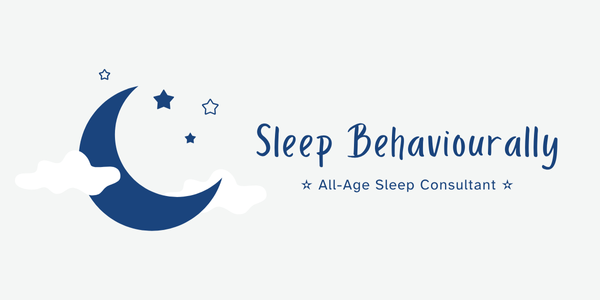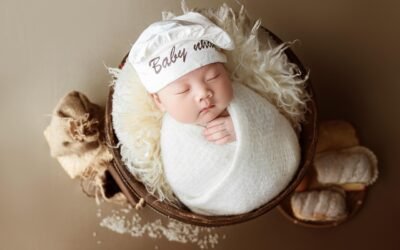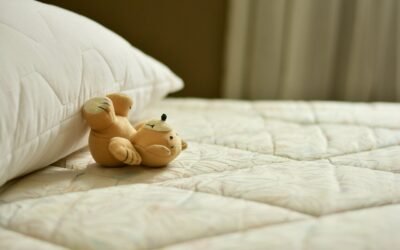As a new parent, you’re dedicated to creating the safest and most comfortable environment for your baby. You’ve baby-proofed your home, from installing stair gates to covering electrical outlets, all to protect your little one from harm. But have you considered the temperature of your baby’s nursery? Getting the nursery temperature right is one of the most critical aspects of creating a safe sleep environment for your infant.
A safe sleep environment is crucial for your baby’s well-being, and maintaining the optimal room temperature is a fundamental part of that safety equation. The right nursery temperature not only ensures a good night’s rest for everyone in the household but can also prevent fatal sleep accidents and significantly reduce the risk of Sudden Infant Death Syndrome (SIDS).
Keeping your baby’s room cool, but comfortable is one of the most important things you can do to create a safe sleep environment. Sleep experts and pediatricians consistently recommend maintaining a nursery temperature between 68° and 72°F (20° to 22.2°C). This specific temperature range has been scientifically proven to help your baby sleep safely and comfortably while minimizing health risks.
In this comprehensive guide, we’ll explore why room temperature is so critical for your baby’s sleep quality and safety, provide practical strategies for maintaining the ideal nursery temperature year-round, discuss how to properly dress your baby for different temperatures, and share expert tips for creating the perfect sleep environment that promotes both safety and restful sleep.
Why Is Nursery Temperature So Important?
Maintaining a safe room temperature for your baby is crucial because it significantly reduces the risk of overheating, a factor that has been strongly linked to SIDS. But even if you know the ideal temperature range, it can be challenging to know if your baby is truly comfortable. A good rule of thumb is to consider your own comfort. If you feel comfortable in the room, it’s likely your baby does too. Most adults and babies feel comfortable in a room that is between 68° and 72°F (20° to 22.2°C), especially when dressed appropriately.
SIDS is the unexplained death of a child under one year of age, and these tragic deaths almost always occur during sleep. Research has shown that overheating can cause a baby to fall into a very deep sleep, making it difficult for them to wake up. This is why it’s so important to avoid overdressing your baby or using heavy blankets. A cool, comfortable sleep environment is a safer sleep environment.
Babies are not as efficient at regulating their body temperature as adults. They have a larger body surface area to weight ratio, which means they can lose heat rapidly. However, they also sweat less than adults, which is a primary way our bodies cool down. This makes them more vulnerable to overheating. A nursery that is too warm can therefore be dangerous. Using a fan can help to circulate the air and reduce the risk of overheating. One study found that using a fan when the room temperature was above 70°F was associated with a lower risk of SIDS.
How to Maintain the Ideal Nursery Temperature
The best way to keep your baby’s room at the right temperature is to monitor your thermostat. Setting the temperature to the recommended range of 68° to 72°F (20° to 22.2°C) will help keep the space cool and comfortable, promoting safer and better sleep for your baby. However, it’s important to remember that your home’s thermostat controls the temperature of the entire house, and individual rooms can vary. Several factors can affect the temperature of a specific room.
For example, a room with many windows or older, less insulated windows may not maintain the same temperature as the rest of the house. Problems with ductwork can also prevent cool air and heat from flowing properly into a room. Poor insulation is another common culprit for temperature inconsistencies. For these reasons, it’s a good idea to use an indoor thermometer to get an accurate reading of the temperature in your baby’s nursery. This is especially important because the temperature in your bedroom might be different from the temperature in your baby’s room.
Here are some additional tips for maintaining the ideal nursery temperature:
- Use a Fan: A fan can help circulate air and reduce the risk of overheating. Point the fan upwards towards the ceiling rather than directly at your baby.
- Avoid Direct Heat and Cold Sources: Place the crib away from windows, radiators, and other items that can influence the ambient temperature.
- Consider Room Location: Rooms on higher floors tend to be warmer. If possible, choose a cooler room for your baby to sleep in during the summer months.
- Room Sharing: The American Academy of Pediatrics (AAP) recommends that babies sleep in the same room as their parents for the first 6 to 12 months, but not in the same bed. This can decrease the risk of SIDS by as much as 50 percent. While the exact reason is unknown, it may be because parents can more closely monitor their baby. The background noise in the parents’ bedroom can also prevent the baby from falling into too deep of a sleep, which may also contribute to SIDS.
How to Dress Your Baby for Sleep
Knowing how to dress your baby for sleep can be tricky. The most important thing to remember is that if you feel comfortable, your baby probably does too. If heavy pajamas and a thick blanket would make you feel hot and sweaty, your baby will likely feel the same. Signs that your baby is too warm include flushing, sweating, or heavy breathing. If the temperature in your house tends to rise at night, check on your baby to make sure they are comfortable. You can gently touch the back of their head or their belly to see if they feel warm or cool. It’s not reliable to check their hands or feet to gauge their body temperature.
There is sleepwear designed to help your baby feel more comfortable at night. Instead of dressing your baby in pajamas and a blanket (which is not a safe option), consider a wearable blanket or footed pajamas during the winter. In the summer, you can opt for lighter pajamas or a onesie with socks. If your baby is sick and has a fever, they will be warmer, so avoid heavy pajamas until they are feeling better. The AAP recommends dressing your baby in one more layer than an adult would wear to be comfortable.
Creating a Safe and Comfortable Sleep Environment: Your Action Plan
Creating the perfect nursery temperature for your baby’s sleep is one of the most important steps you can take to ensure their safety, comfort, and healthy development. By maintaining a consistent temperature between 68° and 72°F (20° to 22.2°C), you significantly reduce the risk of overheating and SIDS while promoting better sleep quality for your little one.
Key Takeaways for Perfect Nursery Temperature:
- Monitor consistently: Use a reliable room thermometer to track nursery temperature and make adjustments as needed
- Dress appropriately: Follow the “one extra layer” rule and choose breathable, temperature-appropriate sleepwear
- Use fans wisely: Circulate air with fans pointed away from your baby to reduce overheating risk
- Consider seasonal changes: Adjust your temperature management strategies based on weather and seasonal conditions
- Watch for warning signs: Learn to recognize signs of overheating and take immediate action when necessary
- Maintain humidity: Keep humidity levels between 30-50% for optimal comfort and health
Remember the Bigger Picture:
While temperature control is crucial, it’s part of a comprehensive approach to safe sleep. Combine proper temperature management with other safe sleep practices recommended by pediatricians: placing your baby on their back to sleep, using a firm mattress, keeping the crib free of loose bedding and toys, and sharing your room (but not your bed) for the first six months to a year.
Every baby is unique, and what works for one may need adjustment for another. Trust your parental instincts, stay informed about safe sleep practices, and don’t hesitate to consult with your pediatrician if you have concerns about your baby’s sleep environment or comfort.
By following these evidence-based guidelines for nursery temperature and creating a comprehensive safe sleep environment, you’re giving your baby the best foundation for healthy, restful sleep – and peace of mind for yourself as a parent. Sweet dreams start with the perfect temperature, and now you have all the tools you need to create that ideal environment for your little one.
Recognizing Signs of Overheating in Your Baby
Understanding how to identify when your baby is too warm is essential for maintaining their safety and comfort during sleep. Overheating can happen quickly in infants, and recognizing the warning signs early can prevent serious complications.
Physical Signs Your Baby Is Too Hot:
Watch for these key indicators that your baby may be overheating:
- Flushed or red skin: Your baby’s face, chest, or back may appear unusually red or flushed
- Sweating: Look for dampness on their head, neck, or back, though remember that babies don’t sweat as efficiently as adults
- Rapid or heavy breathing: Breathing that seems labored or faster than normal
- Restlessness: Unusual fussiness or difficulty settling down for sleep
- Hot skin to touch: When you gently touch the back of their neck or their chest, the skin feels noticeably warm or hot
How to Check Your Baby’s Temperature:
The most reliable way to assess if your baby is comfortable is to gently touch the back of their head, neck, or chest. These areas give you the most accurate sense of their core body temperature. Avoid checking their hands or feet, as these extremities are naturally cooler and don’t provide an accurate reading of their overall body temperature.
If you notice any signs of overheating, take immediate action by removing a layer of clothing, adjusting the room temperature, or moving your baby to a cooler environment. Always trust your instincts as a parent – if something seems off, it’s better to err on the side of caution.
The Science Behind Baby Temperature Regulation
Understanding how your baby’s body regulates temperature differently from adults helps explain why maintaining the proper nursery temperature is so crucial. Babies have unique physiological characteristics that make them more vulnerable to temperature fluctuations.
Why Babies Are More Sensitive to Temperature:
Infants have several factors that make temperature regulation challenging:
- Higher surface area to body weight ratio: Babies have proportionally more skin surface area compared to their body weight, which means they lose heat more rapidly than adults
- Immature thermoregulation system: The part of the brain responsible for temperature control is still developing, making it harder for babies to maintain a stable body temperature
- Limited sweating ability: Babies produce less sweat than adults, which reduces their ability to cool down naturally when they become too warm
- Less subcutaneous fat: Newborns have less insulating fat under their skin, making them more susceptible to temperature changes
The Connection Between Temperature and Sleep Cycles:
Research shows that body temperature naturally drops as we prepare for sleep, and this temperature regulation is closely linked to healthy sleep patterns. For babies, maintaining an optimal room temperature supports this natural process and helps promote deeper, more restorative sleep. When the nursery is too warm, it can interfere with these natural sleep cycles and make it harder for your baby to fall asleep and stay asleep.
Developmental Considerations:
Premature babies and newborns require special attention to temperature regulation. Preterm infants may need slightly warmer environments initially, as their temperature regulation systems are even less mature. As babies grow and develop, their ability to regulate temperature improves, but the recommended nursery temperature range of 68° to 72°F remains optimal throughout the first year of life.
Seasonal Temperature Management for Your Nursery
Maintaining the ideal nursery temperature requires different strategies throughout the year. Each season presents unique challenges for keeping your baby’s room within the optimal 68° to 72°F range.
Summer Temperature Management:
During hot summer months, keeping your baby’s nursery cool can be challenging but is essential for safe sleep:
- Use air conditioning wisely: Set your air conditioning to maintain the recommended temperature range, but avoid making the room too cold
- Strategic fan placement: Use ceiling fans or portable fans to circulate air, but ensure the fan is not blowing directly on your baby
- Window management: Keep curtains or blinds closed during the day to block out heat from direct sunlight
- Choose cooler rooms: If possible, use a room on the lower floor or on the north side of your home, as these tend to stay cooler
- Timing matters: Take advantage of cooler evening and early morning temperatures by opening windows when outdoor temperatures drop
Winter Temperature Considerations:
Cold weather brings its own set of challenges for maintaining optimal nursery temperature:
- Avoid overheating: It’s tempting to make the room extra warm in winter, but stick to the 68° to 72°F range
- Monitor heating systems: Ensure your heating system is working efficiently and consider using a separate thermostat for the nursery
- Watch for dry air: Heating systems can dry out the air, which may affect your baby’s comfort and breathing
- Layer management: Resist the urge to over-bundle your baby just because it’s cold outside
Humidity Considerations:
While temperature gets most of the attention, humidity levels also play an important role in your baby’s comfort and health:
- Ideal humidity range: Maintain indoor humidity between 30% and 50%, with some experts recommending closer to 50% for babies
- Summer humidity: High humidity can make a room feel warmer than it actually is, potentially leading to overheating
- Winter dryness: Low humidity from heating systems can cause dry skin and respiratory irritation
- Humidifier use: Consider using a cool-mist humidifier in your baby’s room, especially during winter months
- Monitor levels: Use a hygrometer to track both temperature and humidity levels in the nursery
Creating the Perfect Sleep Environment Beyond Temperature
While temperature is crucial, it’s just one component of an optimal sleep environment for your baby. Creating a comprehensive safe sleep space involves several additional factors that work together with proper temperature control.
Room Setup and Safety:
- Crib placement: Position the crib away from windows, heating vents, radiators, and direct sunlight
- Air circulation: Ensure good air flow throughout the room without creating drafts directly over the crib
- Blackout considerations: Use blackout curtains or shades to create a dark environment that supports healthy sleep patterns
- Noise control: Maintain a quiet environment or use white noise to mask household sounds
Monitoring Tools:
Invest in quality monitoring equipment to help maintain the ideal nursery environment:
- Digital thermometer: Use a reliable room thermometer to get accurate temperature readings
- Hygrometer: Monitor humidity levels alongside temperature
- Smart monitors: Consider smart nursery monitors that track temperature, humidity, and air quality
- Regular checks: Make it a habit to check the nursery temperature before putting your baby down for sleep
Safety Equipment:
- Smoke detectors: Ensure working smoke detectors are installed near the nursery
- Carbon monoxide detectors: Install CO detectors, especially if you use gas heating
- Baby monitors: Use audio or video monitors to keep track of your baby’s comfort and safety




0 Comments